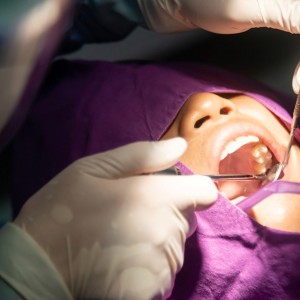
Third molar surgery and complications: local anesthesia vs general anesthesia
Lara Figini
Patient’s anxiety, surgical difficulty, medical background can lead the dentist to choose to perform the wisdom tooth extraction under general rather than local anesthesia. Complications intra- and post-operative rate can depend on the type of anesthesia performed, but there are few studies comparing the complication rates between local versus general anaesthesia in third molar surgery and have conflicting findings.
The removal of impacted mandibular third molars is a common dentoalveolar procedure performed in oral and maxillofacial surgery, with differing levels of difficulty depending on several patient-specific and dental-specific factors. Dental factors include the degree of impaction, angulation, anatomical form, relation to vital neurovascular structures and patient related factors include age, weight, medical history and degree of mouth opening. While surgical outcomes are generally predictable, intra and postoperative complication rates have been documented between 1.1% and 4.3%. Intraoperative complications include lesions of the inferior alveolar and lingual nerve, damage to the adjacent second molar, excessive bleeding, alveolar bone fracture and accidental displacement of tooth fragments in fascial planes or spaces. Postoperative complications include alveolar osteitis, secondary infection, post-operative bleeding and persistent nerve damage.
Materials and Methods
In an Australian retrospective study published on Oral Surgery May 2019 the authors compared the incidence of complication rates following a third-molar surgery performed under local or general anesthesia. Data were collected using a combination of computer database and patient records. A total of 277 patients were included in the study (130 local anaesthesia, 147 general anaesthesia). Several variables were collected and assessed including age, gender, method of anaesthesia, radiographic grading and complications.
Results
Five hundred and twenty-three mandibular third molars were removed, 284 being removed under general anaesthesia and 239 under local anaesthesia. There were a total of 20 complications (3.8%), nine of those from procedures performed under local anaesthesia and 11 from procedures performed under general anaesthesia. There was a statistically significant increase of alveolar osteitis for procedures performed under LA. However, when assessing overall complication rate, there was no statistically significant difference in LA versus GA.
Conclusions
From the data of this study, which must be confirmed in other similar studies, it can be concluded that teeth more severely impacted or angulated tend to be removed under general anaesthesia for reasons such as surgical access and patient experience. This study suggests there is an increase in alveolar osteitis when third molars are removed under LA. However, there was no significant correlation found between the method of anaesthesia and overall complication rate when combining all complications. The present study also suggests that other variables, such as gender and age, may have an important role in determining post-surgical complication rates after the removal of wisdom teeth. Supports the stance that patient preference & anxiety, surgical difficulty, medical background and economic factors are valid to determine the anaesthetic modality because of similar complication rates.
For additional informations: Retrospective multivariable comparison for complications of third molar surgery performed under general versus local anesthesia
Italian version: http://www.odontoiatria33.it/chirurgia-orale/17922/estrazione-dei-denti-del-giudizio-e-complicanze-anestesia-locale-vs-anestesia-generale.html
 Related articles
Related articles
Oral surgery 27 October 2025
The authors assessed the incidence of postoperative bleeding in patients who were highly anticoagulated and in patients who underwent extensive oral surgical procedures and who continued using oral...
Implantology 02 October 2025
Proper implant treatment planning remains the first priority for implant success. Dental imaging is an important tool to accomplish this task.
Oral surgery 05 September 2025
Fentanyl, a short-acting synthetic opioid, has a pharmacokinetic profile suited to fast relief of brief episodic pain.
Oral surgery 22 August 2025
Thiel embalming technique: a valuable method for teaching oral surgery and implantology
Because of its high requirements on surgical experience and the need of complete understanding of the anatomy, oral surgery and especially implantology belong to the most demanding procedures in...
Proper use of oral electrosurgery permits rapid, full management of soft-tissue problems related to mouth preparation for fixed and removable prosthodontics.
 Read more
Read more
Much like EMTs rushing to the scene after an accident, stem cells hurry to the site of a skull fracture to start mending the damage. A new finding has uncovered the signaling mechanism that triggers...
Products 05 November 2025
SimplyTest has launched a groundbreaking saliva-based test to detect high-risk strains of oral human papillomavirus (HPV), a major cause of oropharyngeal cancers.
News 05 November 2025
Perimetrics, Inc., a dental technology company pioneering quantitative diagnostics, announced today that the U.S. Food and Drug Administration (FDA) has granted clearance for the InnerView...
News 05 November 2025
On October 15, open enrollment for Medicare began nationwide. Hundreds of thousands of seniors in New Jersey will once again face the challenge of finding the right Medicare coverage, including the...
Digital Dentistry 04 November 2025
Digitalisation is an expanding field in dentistry and implementation of digital teaching methods in dental education is an essential part of modern education.















